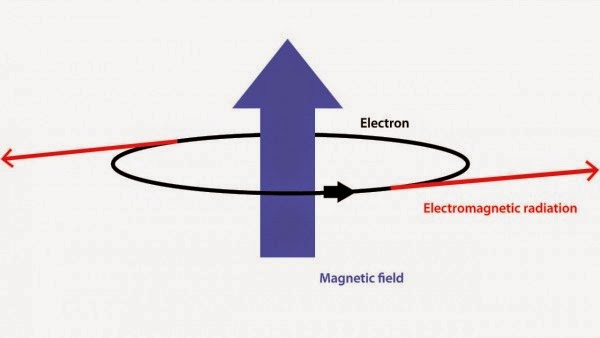 |
| An electron in a magnetic field will turn circles and emit radiation. Adrian Cho - Science Mag |
Topics: Cyclotron, Electromagnetism, Neutrinos, Particle Physics, Radiation
Physicists have long known that charged particles like electrons will spiral in a magnetic field and give off radiation. But nobody had ever detected the radio waves emanating from a single whirling electron—until now. The striking new technique researchers used to do it might someday help particle physicists answer a question that has vexed them for decades: How much does a ghostly particle called the neutrino weigh?
"This is a great achievement on its own, and we're really looking forward to seeing this technology develop over time," says Guido Drexlin, an astroparticle physicist at the Karlsruhe Institute of Technology in Germany who was not involved in the work.
To understand the experiment, suppose an electron flies horizontally through a vertical magnetic field. It will experience a sideways force that is proportional to both its velocity and the strength of the field. That constant sideways shove will cause the electron to run in circles (see diagram). But that turning will also cause the electron to radiate electromagnetic waves, much as a wet dishcloth will fling off drops of water if you whirl it above your head. Of course, the radiation will sap the electron's energy, so that it will gradually spiral inward.
This effect has been understood for a century. It's used to generate x-ray beams by sending electrons racing around circular particle accelerators known as synchrotrons. Such radiation also emanates from swirling particles in interstellar space. Now, 27 physicists with Project 8, an experiment based at the University of Washington, Seattle, have detected radiation from a single electron. "I thought surely somebody must have done this," says Brent VanDevender, a nuclear physicist and team member from Pacific Northwest National Laboratory in Richland, Washington. "I looked and looked and looked in the literature and couldn't find anything."
Science Mag: Physicists detect radio waves from a single electron, Adrian Cho
Comments